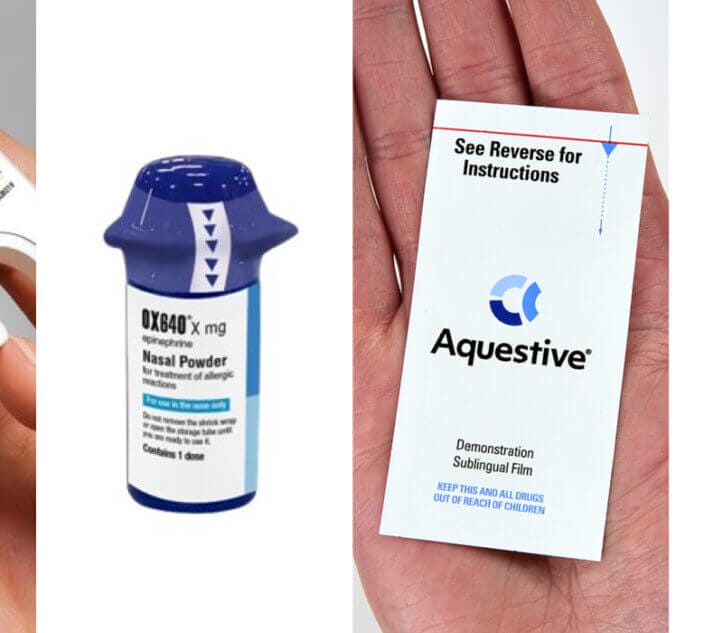
In case of suspected anaphylaxis, people with food allergies are advised to use an epinephrine auto-injector and call 911. But what many people aren’t told is that the ambulance that arrives may not stock epinephrine, and the emergency medical responders staffing the ambulance may not be authorized to use the life-saving drug.
“There is an assumption baked into food allergy emergency action plans that if you call 911 for an anaphylactic reaction that the ambulance crew is going to show up with the proper equipment, training and latitude to treat the anaphylaxis,” said Jen Jobrack, founder of Food Allergy Pros in Chicago. “We are creating a very dangerous expectation because that is not always the case.”
Emergency medical services (EMS) is regulated by state law. According to research conducted by Food Allergy Research & Education (FARE), in 2014, only 11 states mandated that all ambulances carry epinephrine.
Those states included: Connecticut, Louisiana, Illinois, Massachusetts, Maryland, Michigan, Oregon, Rhode Island, Tennessee, Utah and Washington. In most other states, epinephrine was allowed but not required, and there were restrictions on which emergency medical responders could give it.
Know Your Ambulance
Ambulance crews are divided into two categories: Basic Life Support (BLS) and Advanced Life Support (ALS). BLS ambulances may be staffed by emergency medical responders (EMRs), who have about 40 to 60 hours of training, or most often by emergency medical technicians (EMTs).
EMT-Basic responders need from 150 to 260 hours of initial training, while EMT-Intermediates (also known as Advanced EMTs) have from 400 to 500 hours.
EMRs and EMTs perform only a limited scope of medical interventions, and EMRs are generally not permitted to administer epinephrine. In some states, EMTs are not allowed to either, or they need to undergo specific training in administering epi from their medical director, a physician who oversees an EMS agency.
Thanks to the efforts of parents and other advocates, laws regarding epinephrine access are changing in some states. In New Jersey, for example, BLS ambulances are not required to stock epinephrine, but if the medical director authorizes EMTs to use an epinephrine auto-injector and provides training then they can carry and administer it. Legislation has been introduced to require ambulances to stock epinephrine auto-injectors and train EMTs to use it, noted Gordon Johnson, the state representative who is sponsoring the bill.
ALS ambulances are better equipped and are staffed by at least one paramedic. Paramedics have more training than EMTs, typically a minimum of 1,500 hours often offered through a two-year college program. In all states, paramedics are allowed to give epinephrine.
But there are far more EMTs than paramedics responding to emergencies. So if you call 911 for an allergic reaction, there’s a good chance the first crew to respond will be a BLS ambulance, and they may or not have epinephrine.
Cost A Barrier
Another barrier to equipping ambulances with auto-injectors is cost. EMS is provided by numerous types of agencies, including fire departments, private companies, hospitals, county agencies, or volunteers. In some areas, a lack of funding is cited as a reason for not stocking auto-injectors on ambulances, and responders may not be authorized or trained to administer epinephrine from a vial using a syringe, which is a less-expensive option.
“What is concerning is the inconsistency and the lack of predictability,” Jobrack said. “Too much depends on the patient to advocate for epinephrine when minutes matter.”
Ambulance Advice
Food Allergy Pros‘ Jobrack offers these tips to be prepared for an anaphylaxis emergency.
- Call the non-emergency number for your fire department or whichever agency provides emergency medical services (EMS) in your area. Ask which type of emergency medical responder will come to your aid if you call 911 in your area, whether all ambulances stock epinephrine, and which responders are authorized to give it.
- When traveling, carry multiple auto-injectors if possible. That way you can treat yourself, if needed, on the way to the hospital. As well, even if basic-trained crews don’t carry epinephrine, many states permit them to help you administer your auto-injector.
- When you call 911, tell the dispatcher there’s an anaphylactic allergic reaction and epinephrine is needed. This may trigger the dispatcher to send an ambulance with an Advanced Life Support crew. The dispatcher may still send an EMR or EMT crew with less training, if that ambulance can get to you faster.
Related:
At 30,000 Feet, Why We Can’t Count on Epinephrine Vials on an Airplane
How Does Epinephrine Turn Off an Allergic Reaction?
Calm, Cool and Ready to Epi in a Food Allergy Reaction





